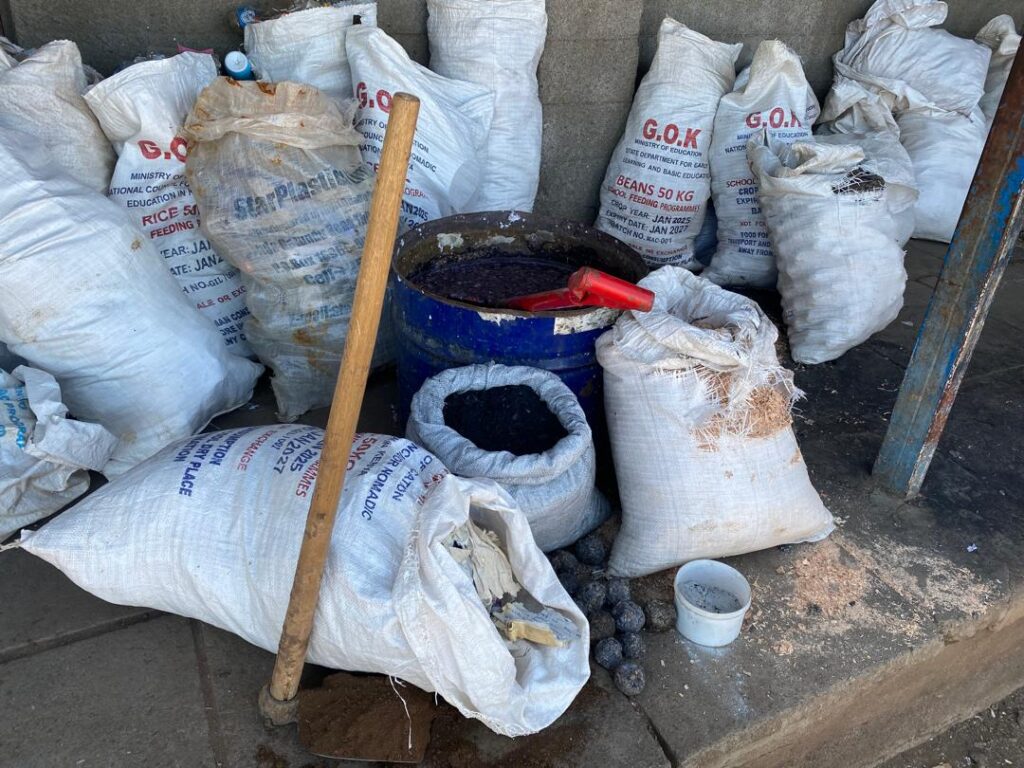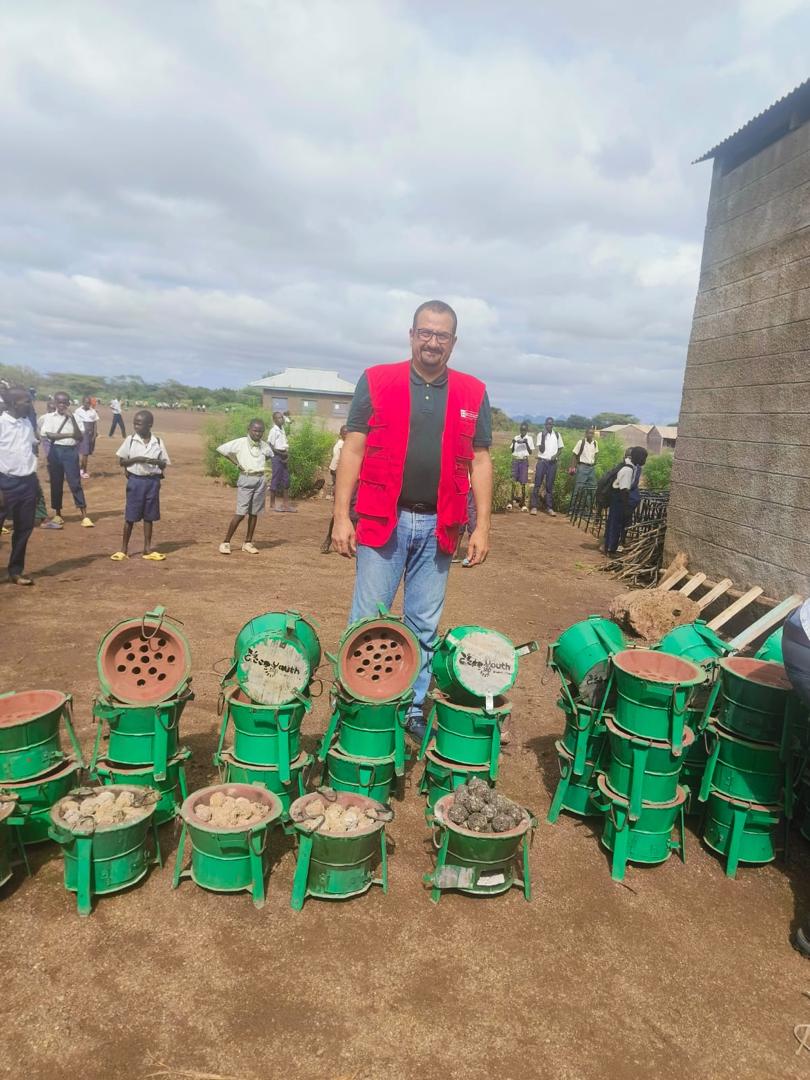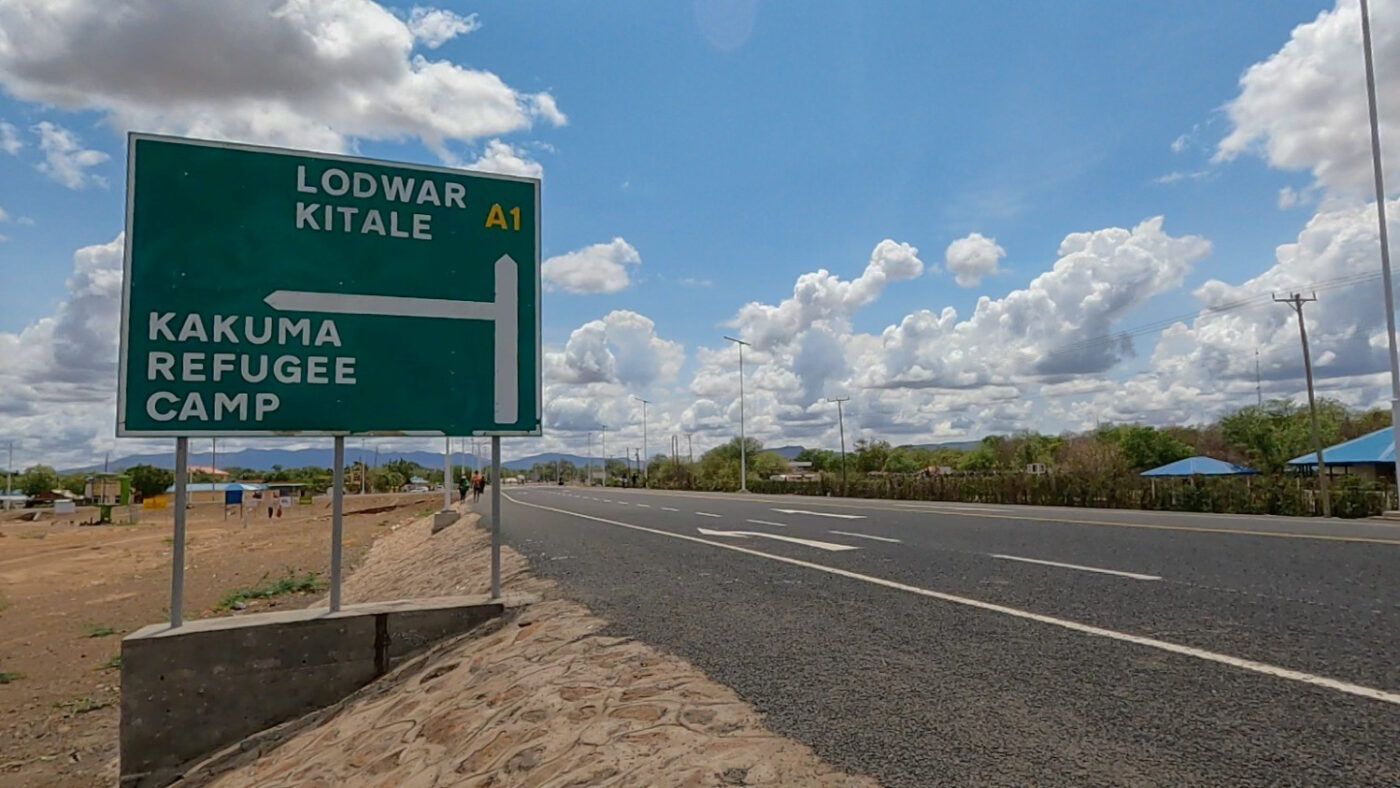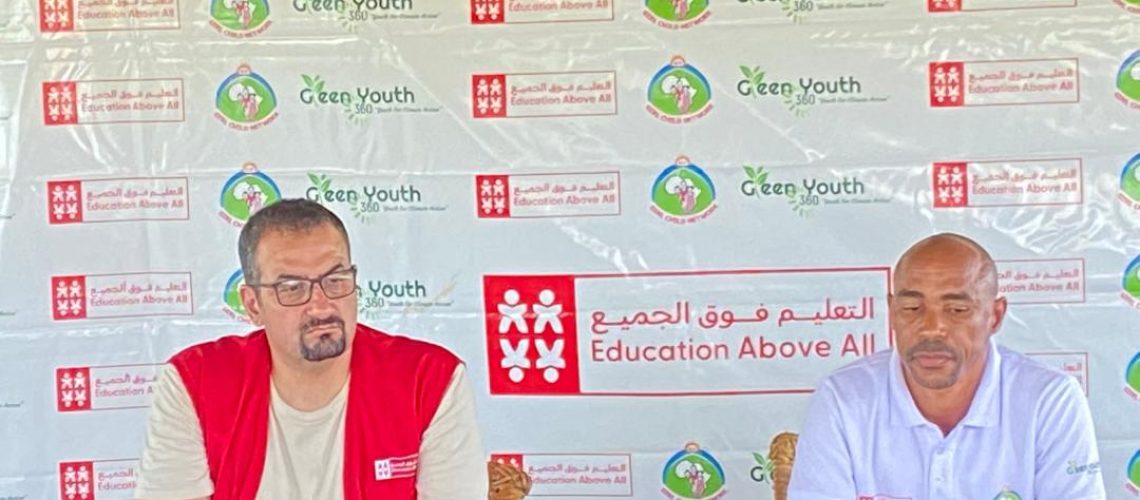Refugees are restricted on harvesting wood for fuel though many use charcoal produced by cutting down trees, causing negative impacts on Kenya’s biodiverse forests.
By Hamza Kyeyune, |23.05.2025
KAMPALA, Uganda, (AA) Awime Magela 22, leaves Blue state secondary school where he studies at 4pm to reach his shelter in Kakuma 1 refugee camp, Northern Kenya, at about 5pm. This part of the camp is commonly known as Hongkong.
He fled Democratic Republic of Congo (DRC) over a decade ago, as fighting raged between government troops and rebels in north Kivu. He resides in a collective shelter with 12 other close relatives. He arrives home hungry, since relief funding from donor countries dwindled. The Trump administration slashed its aid budget by 80 percent, and other Western nations have also reduced donations, resulting in shortage of enough food to feed the refugees.
Mama Awime is already home with most of the shelter-hold members. They are hungry too. Quite often, they are lucky to have a meal every day. She fills her stove with charcoal and lights it up. With charcoal less than USD 50cents, she will boil water and make ugali for the entire household, and boil water for drinking.
Most of her neighbors use charcoal for cooking because there is no alternative source of fuel. Refugees are restricted in harvesting wood for fuel, so they resort to charcoal, a very cheap energy source, which is produced by cutting down trees, causing negative impacts on Kenya’s biodiverse forests.
However, a solution is cooking in Kakuma, with enormous potential for climate action.

With funding from a global education foundation, Education Above All (EAA), on a climate action project implemented in Kakuma refugee camp, by Girl Child Network (GCN), a not-for-profit organization working to improve the well-being of children in East Africa and Green Youth 360, a youth led environmentally sustainable groundbreaking initiative, Awime is making biomass briquettes, as an alternative energy source, which are renewable, non-polluting, and cost-effective.
“We make them from a variety of residues like papers, sawdust, agricultural waste among others, and compared to wood, briquettes have a double density and an excellent energy yield. They are a perfect alternative to fossil fuels like charcoal,” Awime he explains.
He adds that briquettes are much cheaper compared to charcoal.
Brilliant Edamit 15, a student at Kakuma Arid Zone secondary school told Anadolu that she learnt making briquettes through the Green Youth 360 facilitator Ephraim Lodiyo.
“Briquettes retain heat much longer than firewood, keeping the temperature high in the stove, which significantly reduces fuel costs compared to other fossil fuels” she told Anadolu.
Edamit adds that compared to burning wood or charcoal, the briquettes produce less smoke and ash, which helps to reduce indoor air pollution and the likelihood of respiratory illnesses.

Dennis Mutiso, the deputy director for GCN told Anadolu that the project with EAA is implemented in 60 schools within Kakuma refugee camp and host communities, empowering the learners in climate change adaptation and mitigating the climate crisis.
“EAA’s intervention is a bold step towards creating a more resilient and self-reliant future for refugees in Kakuma and their host communities,” he said.
According to EAA’s international programs specialist, Tareq Albakri, the organization aims to among other things help refugees and their host communities to access cheap energy sources while simultaneously contributing to climate change mitigation.
“By using briquettes, these communities could benefit from an environmentally friendly fuel source, setting a practical example for sustainable living and climate action in Kenya, Tareq told Anadolu.
According to the 2019 National Population and Housing Census report, 66.7 per cent of Kenyans rely exclusively on firewood and charcoal for energy. Several reports indicate that the demand for charcoal keeps growing because consumers genuinely have no cheaper and accessible green energy options.
In rural areas, nine out of every ten households use firewood and charcoal, with 40 percent of wood fuel, which includes both charcoal and firewood, unsustainably harvested, reports indicate.

Patience Rusare EAA’s senior media specialist told Anadolu that by empowering refugees and their host communities in Kakuma with the tools and knowledge to make briquettes and adapt to a changing climate, EAA hopes to make a lasting impact on both local and global sustainability efforts.

Several local people that Anadolu spoke to said that while renewable energy sources like briquettes can replace charcoal, there is a lack of tax incentives to encourage large-scale commercial production and community uptake.
They said that government should genuinely promote alternative energy sources like briquettes and as well promote sustainable production of charcoal while preserving natural habitats, since its demand remains high.
They thanked EAA for the support noting that African states have received little of the international support necessary to support them to address climate action. Such support includes climate finance, technology transfer, and capacity building.
Source: AA



